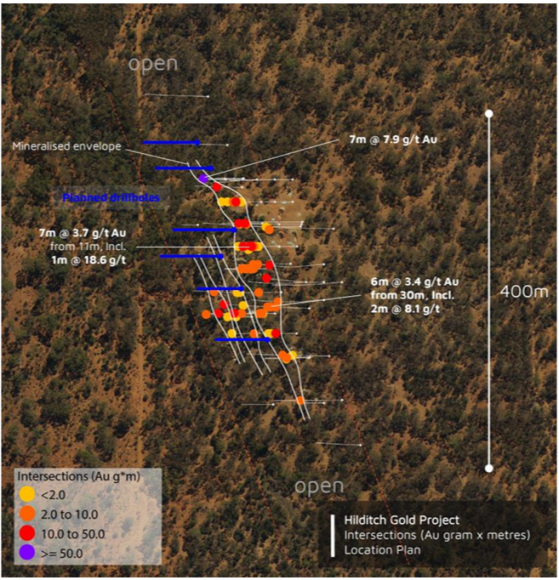Maximus Resources Ltd (ASX:MXR, OTC:MXRRF) has kicked off a 1,500-metre reverse circulation (RC) drill program across its Hilditch Gold Project and the Kandui Nickel prospect, situated near Kambalda in Western Australia.
The Hilditch drill program comprises seven holes across 850 metres targeting two previously identified parallel lodes to bolster a potential gold resource.
Meanwhile, at Kandui, the drill program spans 650 metres across seven holes as well, designed to test a potential high-grade plunge from existing nickel mineralisation and revised basal contact identified through PGE soil sampling.
Looking ahead, Maximus is anticipated to use the new data for potential remodelling of the Hilditch gold mineral resource estimate and further modelling of the Kandui Nickel prospect.
Opportunities for a high-grade shoot
Maximus managing director Tim Wither said: “This latest drill program follows up on previous drilling at Hilditch, which successfully identified two previously unknown gold-bearing lodes.
“Current gold resources at Hilditch are shallow and this drill program specifically targets the extension of all known lodes.
“Hilditch’s shallow gold resource is very amenable to rapid open pit mining, with this latest drill program designed for a potential resource update.
“In addition to the Hilditch drilling, a separate nickel exploration drill program has been allocated to Kandui.
“Significant nickel mineralisation was previously identified at Kandui, and recent geological modelling suggests opportunities for a high-grade shoot.
“Legacy exploration focused on outcropping nickel-bearing gossans which may not be the true basal contact position, and this program will provide information vital to assessing the potential for high-grade zones of nickel sulfides.
“Drilling will also incorporate an untested area, identified through elevated PGE soil sampling.”
Hilditch gold project
Hilditch is just one of the highly prospective regional gold deposits in the company’s Spargoville tenements and currently comprises a shallow inferred resource of 132,000 tonnes at 1.77 g/t gold for 7,511 ounces of gold.
Gold mineralisation at Hilditch is interpreted to be associated with a structurally controlled contact between mafic/ultramafic and volcaniclastic units.
Minor interflow sediments are observed within the mafic and ultramafic sequence, similar to that prevalent at the company’s Wattle Dam Gold Project.
Previous shallow high-grade gold hits include:
- 7 metres at 7.9 g/t gold from 51 metres, including, 2 metres at 16.9 g/t from 52 metres;
- 7 metres at 3.7 g/t from 11 metres, including, 1 metre at 18.6 g/t from 16 metres; and
- 6 metres at 3.4 g/t gold from 30 metres, including, 2 metres at 8.1 g/t from 34 metres.
Hilditch Gold Project.
Kandui nickel prospect
The Kandui prospect is situated at the northwest extent of the Spargoville and Mt Edwards nickel deposits.
Legacy exploration at Kandui focused on outcropping nickel-bearing gossans which identified significant broad zones of mineralisation, with several zones of higher-grade nickel mineralisation.
Legacy drill intersections include:
- 2 metres at 2.4% nickel and 0.5% copper from 74 metres;
- 4 metres at 1.8% nickel and 0.5% copper from 25 metres;
- 2 metres at 1.2% nickel from 1 metre; and
- 2 metres at 1.0% nickel from 74 metres.
Kandui Nickel Prospect.
Forward plan
Maximus’ RC program is expected to take one to two weeks to complete, with assay results expected in four to six weeks following sample submission.
On receipt of the assay results, the additional information may be used for the remodelling of the Hilditch gold mineral resource estimate and additional modelling of the Kandui Nickel prospect.
Hilditch is on a granted mining tenement and presents a near-term production opportunity for the company, especially given the ease of access to its shallow gold resource and its proximity to several toll-treating gold operations.
Read more on Proactive Investors AU
